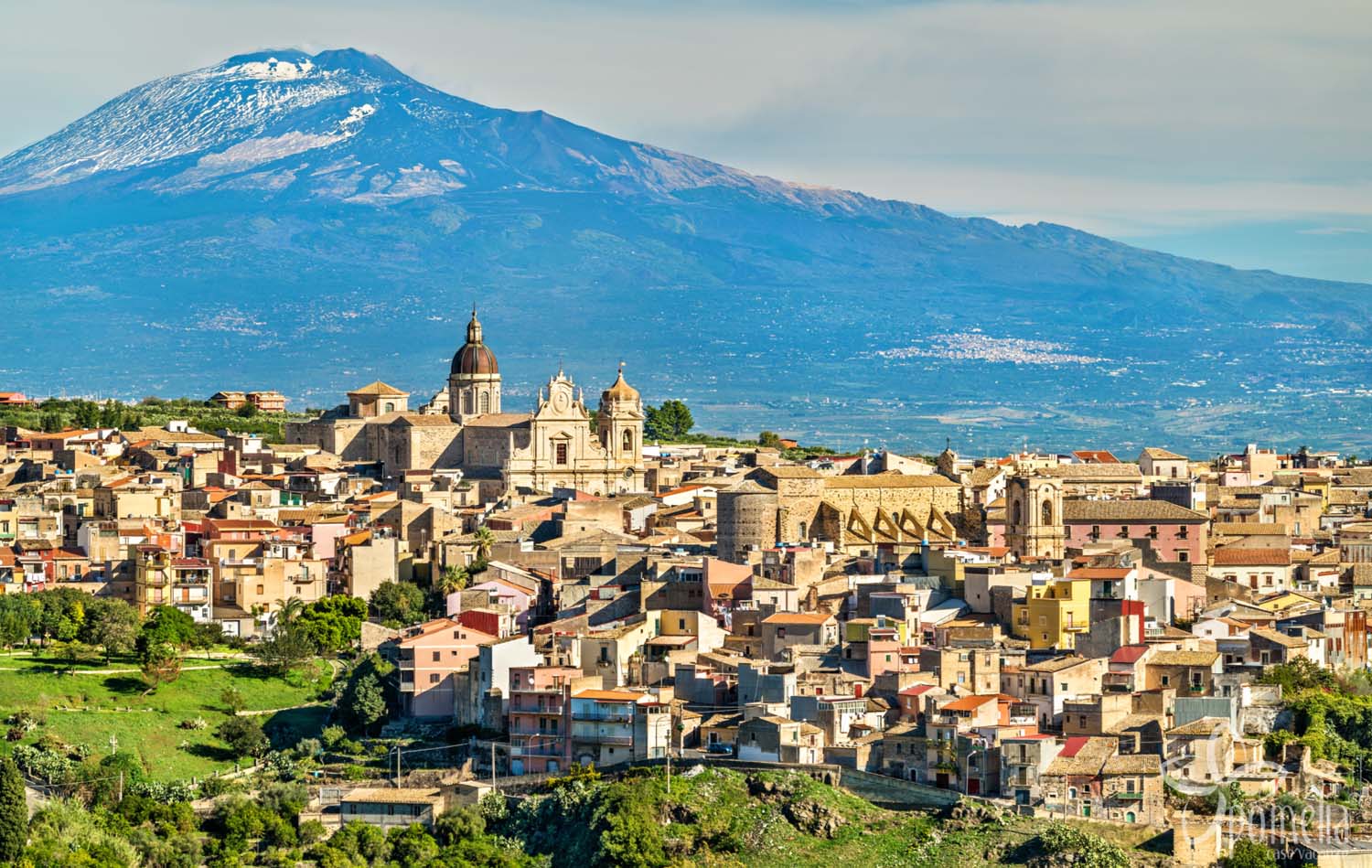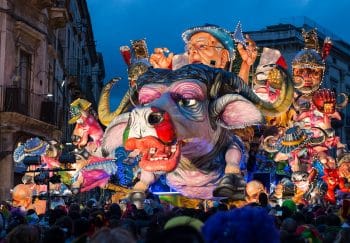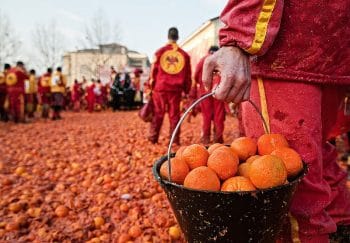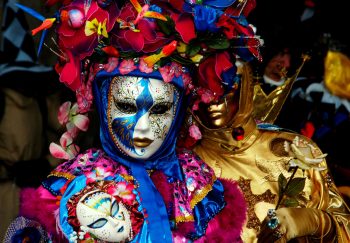“Sicily, the country of oranges, fills the air with its scent in spring ….But, what makes it unique and most fascinating in this world is that it is, at one end, a strange, divine museum of architecture.” (Guy de Maupassant).
Guy de Maupassant’s quote seems perfect for Militello di Val di Noto.
This charming town has kept its original name, Militello Val di Catania, until the Unification of Italy. It also features the beauty of its exceptional, monuments route. It is included in the UNESCO World Heritage List of Baroque Cities of Val di Noto.
Walking in the sunshine on a morning brings us into a world of beauty and art, surrounded by domes and high towers, and many churches and palaces facades. These silent witnesses to an illustrious past are more at home in a European court rather than a fief of the Sicilian hinterland.
It is easy to understand everything when you look at its history. This includes its name which, according to some scholars, comes from Militum Tellus (land for soldiers), which was given by some Roman soldiers who fled the malaria epidemic that hit the swamp of Lentini.
The most fascinating period from a historical and artistic perspective is the period between the fifteenth to the eighteenth centuries, when the city was, once a fief, of the powerful Barresi families, but became the property of the Princes Branciforte. Francesco Branciforte was the one who married the niece Donna Giovanna and gave the city its glory and power.
It is a monuments route that includes dozens of palaces as well as over 20 churches. Many of these were rebuilt after the 1693 earthquake.
Continue on Corso Umberto and you will meet the Chiesa Madre San Nicolo – SS. Salvatore is a masterpiece of Baroque architecture. Its impressive facade, bell tower, and dome make it look majestic. It houses beautiful stuccos and paintings from Serpotta’s school, as well as other valuable works such as a statue by Bagnasco of Palermo. The Museum of Sacred Art is located in the vast crypts below.
Just a little further on, just after Vittorio Emaele Square, is the 16th-century Madonna della Catena Oratory. It survived the 1693 earthquake. This elegant church is home to 13 gold and stucco statues that are dedicated to the most venerated Virgin Martyrs from Sicily.
Continue along Corso Umberto and you will find the Church of SS Sacramento al Circolo, followed by the Church of San Domenico of the Friars Preachers. Now used as an auditorium and the former convent that houses the Archives, the Library, and the Civic Museum.
The Sanctuary of the Madonna della Stella is located at the end of the street in the large square. It was rebuilt from scratch following the destruction of the Santa Maria della Stella. Some significant works were moved from the original church to the new one by Andrea della Robbia of Firenze. The glazed ceramics Naivity and the sarcophagus from Blasco II Barresi, both in international Gothic, were also transferred. Instead, the Museo del Tesoro, within the same religious building, houses the bas-reliefs of Nicolo Speciale and the Triptych attributed Antonello da Messina to Antonello da Messina to.
It is fascinating to see the long list of palaces and churches. Each building is unique because of its particular features. For example, the SS Angeli Custodi church with its eighteenth-century majolica floor or the Anime Sante del Purgatorio Church dedicated Saints Gregory and Vito with its rich altars and a stunning view of the surrounding landscape.
There are many other curiousities around the area, including the Fountain of the Nymph Zizza, which dates back to 1607. It is located in the Barresi-Branciforte Castle courtyard. Here we can see the two cylindrical towers that were used as rooms for the oil mills.
Castles are a magnet for intrigues, murders, and bloody battles for power. The Barresi Branciforte’s Residence was one such place. In 1473, it was the theatre of the drama of Donna Aldonza Santapau populated by servants. Piero Caruso, also known as Bellopede was thrown down from the castle tower. Stories of poisonings and parricides, as well as suspicious deaths, such as the one of Don Francesco Bricforte, who was buried at the church ex-San Benedetto abbey.
The most notable monument is the Church of Santa Maria la Vetere. It was built by the Normans in 1090 but then destroyed by the earthquake of 1693. We can now admire the right aisle with its remarkable entrance portal. It is likely to be sculpted by Antonello Gagini in the late Gothic style. The canopy has columns and rests on the back of lions.
The main festivals in honor of Madonna della Stella (September 8th) and of SS. Always in competition but also the evocative rites Holy Week, and other minor feasts, show how Militello’s inhabitants are attached to their folk and religious traditions. These occasions allow them to express themselves in a mild climate.
The adventure in Militello Val di Catania is not complete without sampling the local cuisine.
The Cassatelle della Zia Monaca is shortbread cookies stuffed with almonds and jams. It also contains liqueur, cinnamon, cloves, and liqueur. The granita with lemon or almond flavors is still being made.
It is impossible to describe all these local delights, but they are worth a visit. You can take your time and enjoy the place, even if you are not on the most popular tourist routes.
“Sicily, the country of oranges, fills the air with its scent in spring ….But, what makes it unique and most fascinating in this world is that it is, at one end, a strange, divine museum of architecture.” (Guy de Maupassant).
Guy de Maupassant’s quote seems perfect for Militello di Val di Noto.
This charming town has kept its original name, Militello Val di Catania, until the Unification of Italy. It also features the beauty of its exceptional, monuments route. It is included in the UNESCO World Heritage List of Baroque Cities in the Val di Noto.
Walking in the sunshine on a morning brings us into a world of beauty and art, surrounded by domes and high towers, and many churches and palaces facades. These silent witnesses to an illustrious past are more at home in a European court rather than a fief of the Sicilian hinterland.
It is easy to understand everything when you look at its history. This includes its name which, according to some scholars, comes from Militum Tellus (land for soldiers) owing to some Roman soldiers who fled the plague in the swamp of Lentini.
The most fascinating period from a historical and artistic perspective is the one between 15 and 18 centuries. This was when the city, which was formerly part of the wealthy Barresi families, became the property of the Princes Branciforte. Francesco Branciforte was the one who married the niece Donna Giovanna and gave the city its glory and power.
It is a monuments route that includes dozens of palaces as well as over 20 churches. Many of these were rebuilt after the 1693 earthquake.
Continue on Corso Umberto and you will meet the Chiesa Madre San Nicolo – SS. Salvatore is a masterpiece of Baroque architecture. It is imposing and magnificent with its dome, bell tower, and facade. This dome was the first reinforced concrete structure in Sicily. It houses beautiful stuccos and paintings from Serpotta’s school, as well as other valuable works such as a statue by Bagnasco of Palermo. The Museum of Sacred Art is located in the vast crypts below.
Just a little further on, just after Vittorio Emaele Square, is the 16th-century Madonna della Catena Oratory. It survived the 1693 earthquake. This elegant church is home to 13 gold and stucco statues that are dedicated to the most venerated Virgin Martyrs from Sicily.
Continue along Corso Umberto and you will find the Church of SS Sacramento al Circolo, followed by the Church of San Domenico of the Friars Preachers. Now used as an auditorium and the former convent that houses the Archives, the Library, and the Civic Museum.
The Sanctuary of the Madonna della Stella is located at the end of the street in the large square. It was rebuilt from scratch following the destruction of the Santa Maria della Stella. Some significant works were moved from the original church to the new one by Andrea della Robbia of Firenze. The glazed ceramics Naivity and the sarcophagus from Blasco II Barresi, both in international Gothic, were also transferred. Instead, the Museo del Tesoro, within the same religious building, houses the bas-reliefs of Nicolo Speciale and the Triptych attributed Antonello da Messina to Antonello da Messina to to .
It is fascinating to see the long list of palaces and churches. Each building is unique because of its particular features. For example, the SS Angeli Custodi church with its eighteenth-century majolica floor or the Anime Sante del Purgatorio Church , dedicated Saints Gregory and Vito with rich altars, and a stunning view of the surrounding landscape.
There are many other curiousities around the area, including the Fountain of the Nymph Zizza, which dates back to 1607. It is located in the Barresi-Branciforte Castle courtyard. Here we can see the two cylindrical towers that were used as rooms for the oil mills.
Castles are a magnet for intrigues, murders, and bloody battles for power. The Barresi Branciforte’s Residence was one such place. In 1473, it was the theatre of the drama of Donna Aldonza Santapau populated by servants. Piero Caruso, also known as Bellopede was thrown down from the castel tower. Stories of poisonings and parricides, as well as suspicious deaths, such the one of Don Francesco Bricforte, who was buried at the church ex San Benedetto abbey.
The most notable monument is the Church of Santa Maria la Vetere. It was built by the Normans 1090, but then destroyed by the earthquake of 1693. We can now admire the right aisle with its remarkable entrance portal. It is likely to be sculpted by Antonello Gagini in late Gothic style. The canopy has columns and rests on the backs of lions.
The main festivals in honor of Madonna della Stella (September 8th) and of SS. Always in competition but also the evocative rites Holy Week, and other minor feasts, show how Militello’s inhabitants are attached to their folk and religious traditions. These occasions allow them to express themselves in a mild climate.
The adventure in Militello Val di Catania is not complete without sampling the local cuisine.
The Cassatelle della Zia Monaca is shortbread cookies stuffed with almonds and jams. It also contains liqueur, cinnamon, cloves, and liqueur. The granita with lemon or almond flavors is still being made.
It is impossible to describe all these local delights, but they are worth a visit. You can take your time and enjoy the place, even if you are not on the most popular tourist routes.












